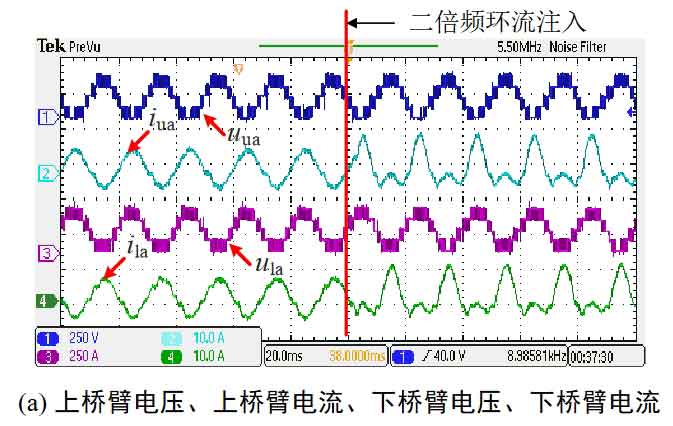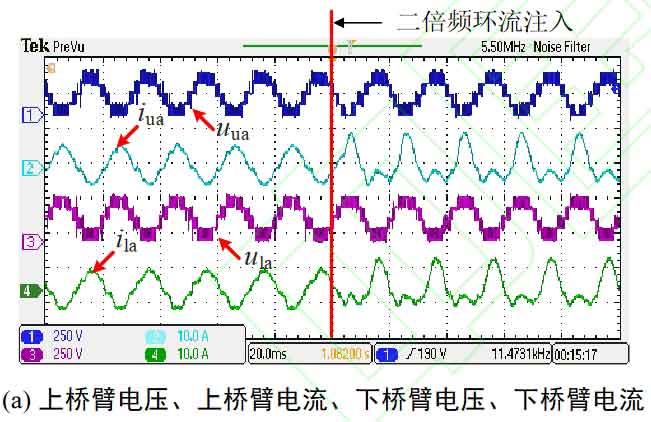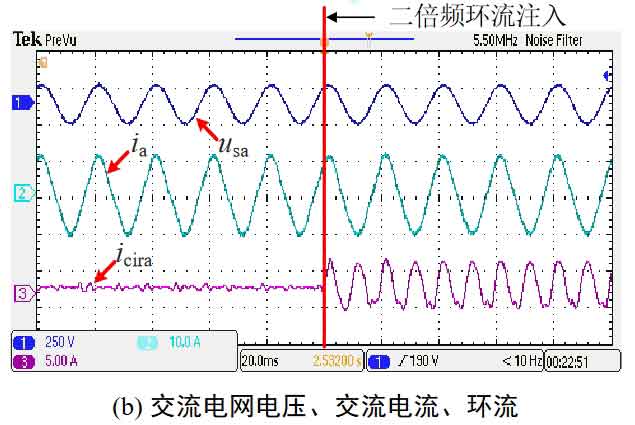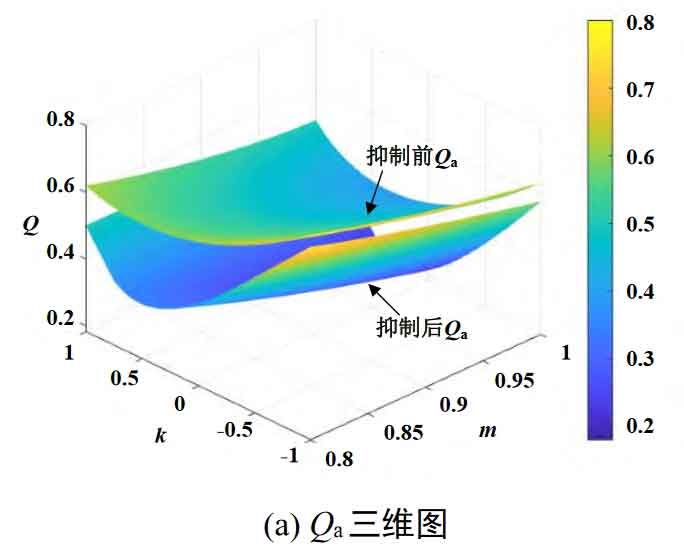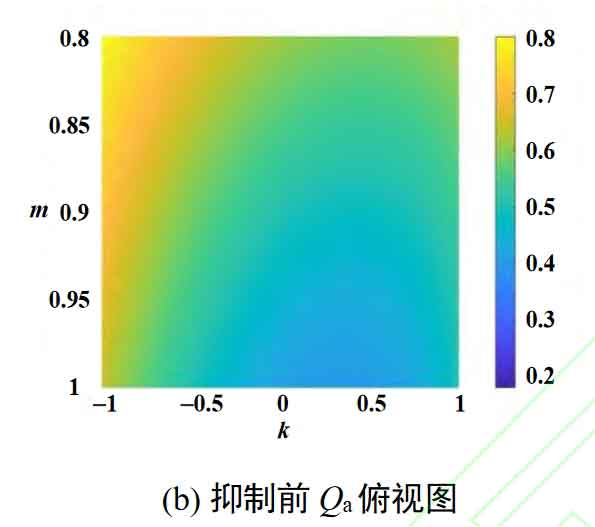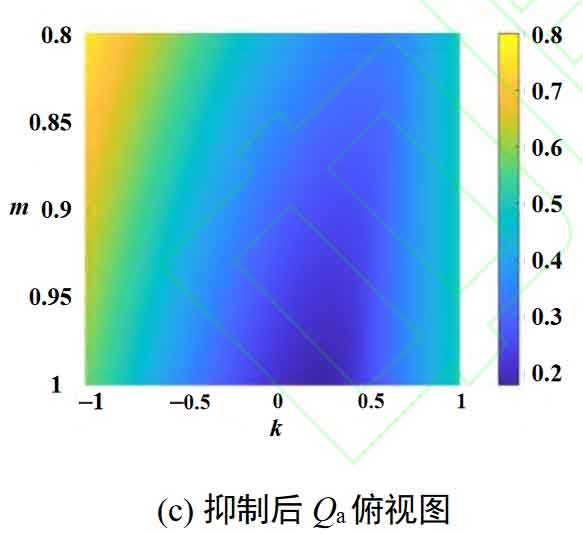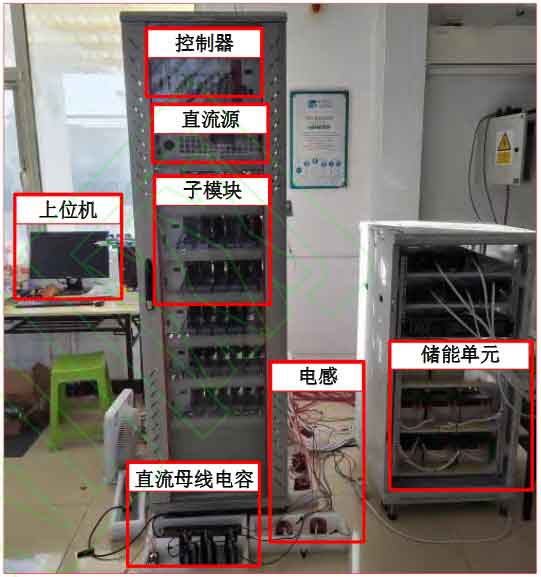
| Parameters | Experimental value |
| DC voltage Vdc | 320V |
| AC voltage amplitude Vm | 128V |
| Rated modulation ratio m | 0.8 |
| Number of bridge arm submodules N | 4 |
| Network side inductance L | 5mH |
| Bridge arm inductance Larm | 5mH |
| Switching frequency fs | 5kHz |
| Energy storage unit voltage vbat | 80V |
To verify the effectiveness of the strategy, a single-phase modular multilevel converter-battery energy storage system experimental platform was constructed as shown in Figure 1, with specific parameters shown in Table 1. The modular multilevel converter-battery energy storage system AC side is connected to the AC power grid through a voltage regulator, and the DC side is connected to the DC source through a DC bus capacitor. The energy storage system mainly consists of a lithium battery pack and a battery management system, with the output voltage of the energy storage unit controlled at around 80V. During the experiment, the amplitude of the AC side voltage was maintained at 128V, the DC side voltage was maintained at 320V, and the modulation ratio was 0.8. Due to experimental limitations, a PR controller was used to directly control the single-phase current for AC power control in the experiment. The DC power, circulating current control, and charge throughput suppression strategies are the same as the corresponding parts in Figure 2.
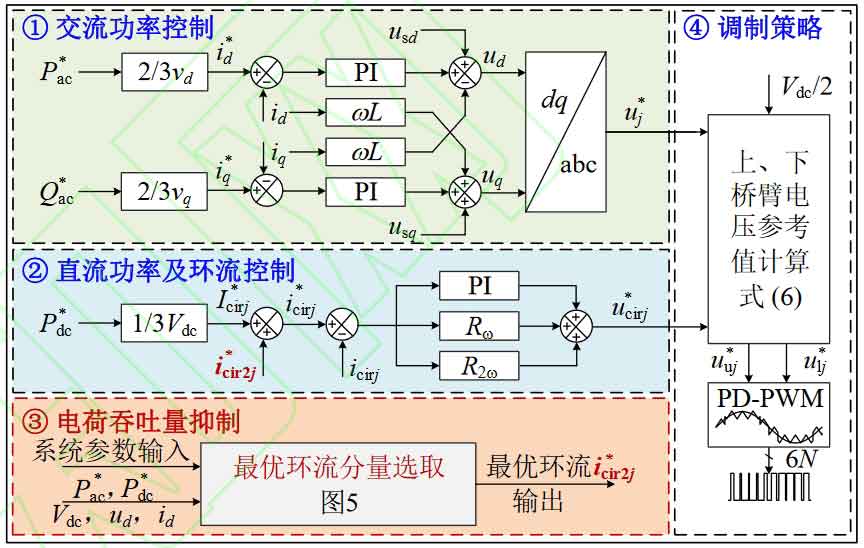
1. Experimental results
In the experiment, modular multilevel converter-battery energy storage system worked in the inverter state and the battery was in the discharge state. Two experimental conditions, k=-0.2 and k=-0.5, were set, and the experimental results are shown in Figure 3 and Figure 4, respectively. The experimental results of Experiment Condition 1 are shown in Figure 3, where Figure (a) shows the voltage and current of the upper and lower bridge arms, and Figure (b) shows the voltage, current, and circulating current of the AC power grid. At this point, k=-0.2, the amplitude of the AC output current is 10A, and the DC circulating current is about 1.6A. At the initial stage, the traditional circulation suppression strategy was adopted, and the double frequency circulation was effectively suppressed. After 0.1 seconds, a double frequency circulation with an amplitude of 3.4A and an initial phase angle of 0 was injected, and the circulation tracking effect and dynamic performance were good.
The experimental results of Experiment Condition 2 are shown in Figure 4, and the physical quantities in the figure are consistent with Experiment Condition 1. At this point, k=-0.5, the amplitude of the AC output current is 10A, and the DC circulating current is about 1A. At the initial stage, a traditional circulation suppression strategy is adopted, and after 0.1 seconds, a second harmonic circulation with an amplitude of 3.2A and an initial phase angle of 0 is injected. The control effect is similar to experimental condition one.
2. Analysis of experimental results
Using the experimentally measured voltage of the upper and lower bridge arms, derive the modulation signals of the upper and lower bridge arms based on the formula, and calculate the total battery charge throughput of the system under a single power frequency cycle using the formula. The comparison of experimental results before and after charge throughput suppression is shown in Table 2.
| Operating conditions | Control strategy | Charge throughput/C | Inhibition rate |
| Experimental condition 1 | Traditional method | 0.193 | 31.53% |
| Experimental condition 1 | Proposed method | 0.132 | 31.53% |
| Experimental condition 2 | Traditional method | 0.205 | 23.28% |
| Experimental condition 2 | Proposed method | 0.158 | 23.28% |
The inhibition rates of modular multilevel converter-battery energy storage system charge throughput under two experimental conditions were 31.53% and 23.28%, respectively. Compared to experimental condition one, experimental condition two has a higher battery power, a relatively higher charge throughput, and a lower inhibition rate of charge throughput, which is consistent with the theoretical analysis results in Figure 5.
In order to suppress the charge throughput of modular multilevel converter-battery energy storage system in medium voltage DC distribution networks and reduce its impact on the lifespan of battery energy storage systems, a charge throughput suppression strategy based on double frequency circulating current injection is proposed. The following conclusions were obtained through theoretical analysis, simulation, and experimental verification:
1) The main factors affecting the charge throughput of modular multilevel converter-battery energy storage system batteries in medium voltage DC distribution networks include modulation ratio m, energy storage power ratio k, and circulating current; When m and k are fixed, the charge throughput of modular multilevel converter-battery energy storage system can be suppressed by injecting a second harmonic circulating current.
2) At the same battery power, the charge throughput generated by modular multilevel converter-battery energy storage system is different under conditions of k>0 and k<0. When k>0, the charge throughput generated by modular multilevel converter-battery energy storage system is less, and the proposed suppression strategy has better effectiveness.
3) Using the proposed strategy, the charge throughput of modular multilevel converter-battery energy storage system can be reduced by approximately 37.58%, 24.51%, 24.22%, and 37.09% under four typical simulation conditions, respectively. The charge throughput can be reduced by 31.53% and 23.28% under two discharge experimental conditions, respectively. Due to limitations in experimental conditions, this article only verified the experimental results under discharge conditions. In the future, the effectiveness of the proposed strategy will be further verified using the experimental results under battery pack charging conditions.

